It’s no secret that technology plays a huge role in everyday life. People are constantly connected to their phones, tablets, and computers in one way or another; it’s just part of our culture. Educators need to embrace technology and use it in ways that will help our students succeed. In this blog post, we’ll discuss some unique ways to integrate technology into your classroom so that learning is fun and engaging for everyone involved:
#1: Use technology to enhance student learning.
Technology can be used to enhance student learning in several ways. It’s important to note that technology is not the only tool for enhancing student learning, but it can be an effective way to help students learn more efficiently and effectively.
Using technology in the classroom involves more than just having a laptop or tablet available for students to use at their desks. Teachers should incorporate technology into their lesson plans so that they’re able to engage their students in active participation while also providing them with opportunities to practice skills they’ve learned in class (such as reading comprehension).
#2: Create a classroom blog.
Blogging is a great way to keep students engaged and parents informed. Blogs can be used as a tool for assessment or even just an outlet for students to share their thoughts on the books they’re reading in class.
Blogs are a great way for teachers to communicate with parents and students. They can be used to publish class updates or announcements, share student work, post reading logs or reading lists, and even post homework assignments.
Blogs are also a great way for students to get involved in class discussions. You can ask them to post comments on their thoughts about what they’re reading and how it relates to the course content, or you can use the blog as a place for students to share their opinions about current events or issues facing society today.
If you’re not sure how to start a blog, there are plenty of resources online that can help. One of the easiest ways is to sign up for a free account at Blogger or WordPress, two of the most popular blogging platforms out there. Once you’ve created your account and selected a template for your blog, it’s time to get started!
#3: Utilize Virtual Reality for Learning
Virtual reality is a great tool for the classroom. It can be used in many ways to help students learn.
Virtual reality is a great way to teach lessons that are difficult to explain with just words. This can be especially helpful for students with special needs, who may need more sensory tools to assist with learning. For example, if you want your students to understand how something feels, or what it looks like, you could use virtual reality to create an environment where they can see and feel it for themselves.
- Teaching science: Students can learn about the solar system, or the inner workings of a cell, by exploring them with VR. This helps them remember their lessons better than if they had only read about them in a textbook or seen pictures of them on a screen.
- Teaching history: Students can get a sense of what it was like to live during periods in history by visiting virtual recreations of those time periods. For example, they might visit ancient Rome or Colonial Williamsburg through VR. This helps them understand historical events better than if they had just heard about them in class or read about them in a book.
- Teaching art: Students can learn how artists use different techniques and materials when creating works of art by visiting virtual museums filled with pieces from all kinds of different artists’ bodies of work. This gives them a better understanding of why artists choose certain materials when they create their pieces than if they simply looked at pictures of those works in textbooks or online.
#4: Offer students the opportunity to learn through exploration and discovery.
A great way to introduce students to technology is by giving them the opportunity to learn through exploration and discovery. When you do this, you allow them to explore topics that interest them, which can be done by using tools like Google Docs or Socrative. Students can also use these tools for communication purposes; for example, if a student has a question about something related to your lesson plan, he or she could use Google Docs to ask another student who might know the answer. This type of interaction helps build confidence in both parties involved because it allows each one more opportunities for success when working together collaboratively towards solving problems together as classmates rather than individually trying their hardest without any help from anyone else!
#5: Use Skype to connect with other classrooms around the world.
Skype is a free tool that allows you to connect with other classrooms around the world. This can be an excellent way to encourage students to learn about other cultures and countries, as well as explore new topics in depth. For example, if your class is studying astronomy, ask another classroom if they would like to talk about their favorite planets or stars while looking at them through telescopes (or cameras). Or if one of your students has a question about something in another country’s culture–like why people eat bugs there–Skype is an easy way for them to get answers from someone who actually lives there!
#6: Integrate digital portfolios into the learning process.
Digital portfolios are a great way to collect student work. They can also be used to show progress over time, and they allow teachers from different disciplines to collaborate on projects. Students love digital portfolios because they’re fun and interactive, which means that you’ll get more participation out of your students than with traditional assignments.
Digital portfolios are simply collections of documents that showcase student learning over time. The best digital portfolios include both written work and multimedia elements such as videos or graphics (like infographics). Typically, they’re organized into categories like “writing,” “math” or “artwork,” but there’s no right way to organize them–you just need enough variety so that when someone looks at your student’s portfolio, they see them as more than just another collection of papers but rather as a body of work representing their academic career thus far!
#7: Use apps that are appropriate for your curriculum and ages of students, but also fun!
The best way to integrate technology into the classroom is by using apps that are appropriate for your curriculum and ages of students, but also fun! For example, if you’re working on fractions with a first grader, try using an app like “Fraction Action” or “Fraction Hero.” These games will help children understand fractions by helping them identify them in real life situations (like when they see a pie). They’ll have fun while learning at the same time!
#8: Have students create social media accounts for their classroom that are used as an educational tool, not just a distraction!
A social media account for your classroom is a great way to share student work, upcoming events, and achievements. You can also use it as an additional source of feedback for students.
Students can create an account on any platform (Twitter, Instagram, Facebook etc.) that they want and begin uploading photos of their work or recent projects. This will allow you as the teacher or student to share these images with other people who may be interested in what’s going on in your classroom!
#9: There are many ways to integrate technology into the classroom without having to purchase lots of extra equipment or software.
There are many ways to integrate technology into the classroom without having to purchase lots of extra equipment or software. Here are some ideas:
- Plan ahead. Make sure your students can access their Chromebooks before they come into class, and make sure they know how to use them. It’s also good to have a plan for what devices will be used for which activities (iPads vs laptops vs smartphones). You don’t want a student getting frustrated because his computer won’t connect with the projector when he needs it most!
- Start small and build up slowly over time as you get more comfortable with using technology in your lessons. Don’t try doing too much at once; instead focus on one or two things at first, then add more as needed throughout the year based on student interest and need within each subject area.*
Conclusion
These are just some of the ways that you can integrate technology into your classroom. From there, it’s up to you! We hope this guide has helped give you some ideas on how to get started with integrating technology into your curriculum.
Did we miss something? Drop a comment below and tell us your most unique way of integrating technology into your classroom!
5 ways to increase student device accountability 5 ways to increase student device accountability







